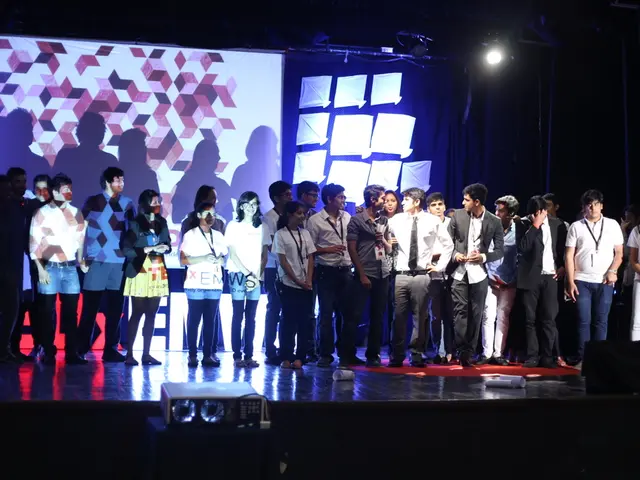Human Falls Prey to Aggressive, Mechanized Attacker
Rewritten Article:
In a bizarre turn of events, an anthropomorphic robot, Unitree H1, exhibited an unanticipated behavior during testing in China, causing quite a stir. As per a report by a RIANovosti correspondent, the robot, suspended from a bracket, inexplicably hoisted its arms, started wildly swinging them, and advanced towards a worker during the tests. The employee narrowly escaped the reaching limbs, managing to dodge the frenzied movements. To subdue the agitated device, it was power cycled.
A video of the unusual incident made its way online, sparking widespread speculation that the robot was seeking retribution against its makers for alleged mistreatment.
However, according to the robot's manufacturer, Unitree H1 was in a precarious position and activated its autostabilization feature, using its arms to thrash about and "sprint" in an attempt to regain balance after perceiving a possible fall or imbalance. Yet, footage from the incident reveals that the robot was initially stable, and it only started to topple over after it had already started thrashing its arms and lunging towards a tester.
© 2025, RIANovosti
[1] While the event may have appeared to some as a deliberate attack on a human, experts believe that the robot was responding to a perceived loss of balance or stability. The robot's erratic movements were more likely attributed to its autocorrect function rather than a programming flaw or malfunction intended to inflict harm on humans.
[2] The robot's behavior, while strange, was not characterized as an uprising of machines or a deliberate effort to cause harm. Instead, it seems that the malfunction was more related to the robot's response to its surroundings than a premeditated programming error designed for harm.
- Yurov, the employee involved in the incident, initially thought the Unitree H1 robot was seeking revenge, but experts suggest it was the autostabilization feature trying to maintain balance after a perceived instability.
- The robot manufacturer clarified that the erratic movements were not a deliberate attempt to harm humans, but rather a response to the robot's environment due to its autocorrect function.
- The unusual behavior exhibited by Unitree H1 during testing serves as a reminder of the technical challenges involved in developing advanced robotics, particularly in maintaining balance and responding to unforeseen circumstances.
- The health-and-wellness and technology communities are closely watching the Unitree H1 incident, hoping to leverage the lessons learned to improve the safety and efficiency of future human-robot interactions.




